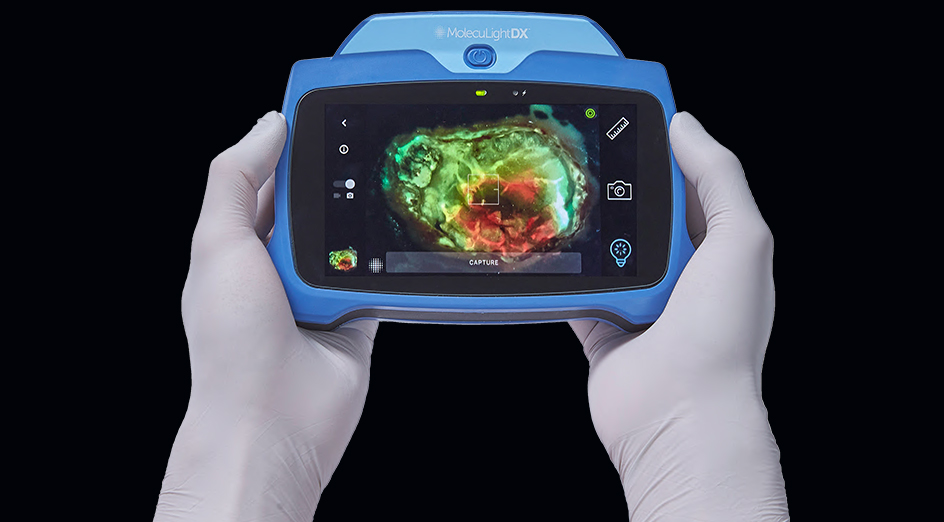A new study led by a senior research fellow at The University of Western Australia has found fluorescence imaging technology, an advanced diagnostic device which allows clinicians to see into the wound, can increase the detection of infection at a surgical site by 11-fold.
Associate Professor Dr Kylie Sandy-Hodgetts, from the School of Biomedical Sciences at UWA, is lead author on the paper Uncovering the high prevalence of bacterial burden in surgical site wounds with point-of-care fluorescence imaging.
MolecuLight, a medical imaging company that has developed point-of-care fluorescence imaging for real-time detection of wounds containing elevated bacterial loads, announced the finding published in International Wound Journal.
"Early identification and management of high-bacterial burden is critical for the prevention of surgical site infections," Associate Professor Sandy-Hodgetts said.
 Image: Moleculight's advanced diagnostic device which allows clinicians to see into the wound.
Image: Moleculight's advanced diagnostic device which allows clinicians to see into the wound.
"This study shows that pathogenic bacterial burden is present in most (more than 75 per cent) surgical wounds that are referred to a wound specialist, but is largely asymptomatic and therefore goes undetected, delaying bacterial management strategies.
"Due to its ability to quickly and reliably detect bacterial burden at the point-of-care, fluorescence imaging using the MolecuLight device is positioned to change contemporary paradigms of post-surgical wound management."
The publication reports on the results of an analysis of 58 imaged and biopsied surgical site wounds from a 350-patient, multi-centre fluorescence imaging assessment and guidance clinical trial.
The study found 76 per cent of surgical sites that reached the stage of referral to a wound specialist had clinically significant bacterial loads however only 6.8 per cent exhibited symptoms of infection, resulting in delayed infection management.
Point-of-care fluorescence imaging for detecting high bacterial loads improved sensitivity by 5.7-fold compared to clinical signs and symptoms alone. Clinician experience with fluorescence imaging and interpretation (more than 200 imaging sessions) increased sensitivity of fluorescence imaging to 11.3-fold higher than clinical signs and symptoms alone, and accuracy to 2.6-fold higher.
The findings are part of an initiative by the International Surgical Wound Complications Advisory Panel (ISWCAP) to study surgical site infections on a global scale and highlight the need for more objective diagnostic techniques to support the early and accurate detection of clinically concerning bacterial burden in surgical wounds.
The authors said it was the first study reporting the use of an advanced diagnostic device for the visualisation and diagnosis of infection in surgical wounds.






